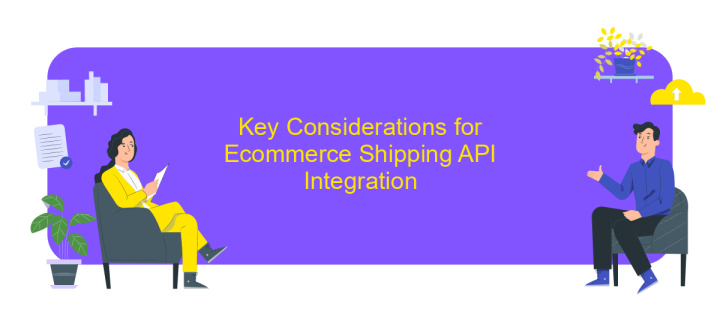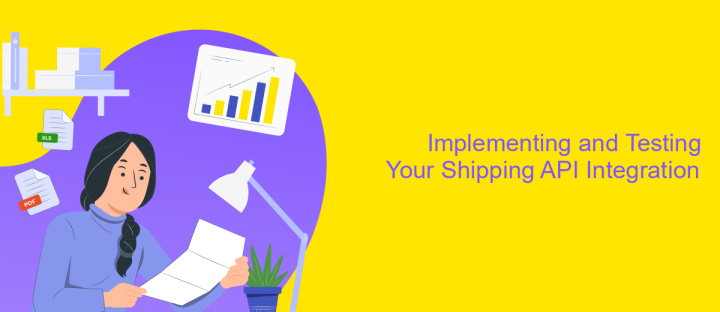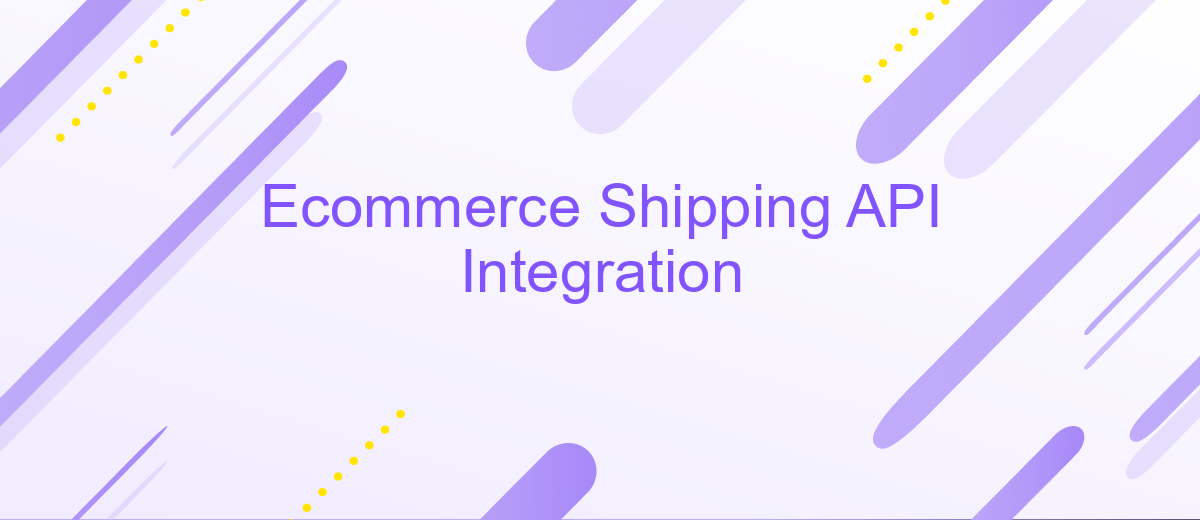Ecommerce Shipping API Integration
In today's fast-paced digital marketplace, efficient shipping solutions are crucial for eCommerce success. Integrating a Shipping API into your online store can streamline operations, enhance customer satisfaction, and reduce costs. This article explores the benefits of eCommerce Shipping API integration, offering insights into how it can optimize your shipping process and improve overall business performance. Discover the key steps and considerations for seamless implementation.
Understanding Ecommerce Shipping APIs and Their Benefits
Ecommerce Shipping APIs are essential tools that streamline the shipping process for online businesses. These APIs allow ecommerce platforms to connect seamlessly with various shipping carriers, enabling real-time access to shipping rates, tracking information, and label printing. By integrating these APIs, businesses can automate and optimize their shipping operations, reducing manual errors and improving customer satisfaction.
- Real-time shipping rates: Access up-to-date shipping costs from multiple carriers, allowing customers to choose the best option.
- Order tracking: Provide customers with accurate tracking information, enhancing transparency and trust.
- Automated label printing: Generate and print shipping labels effortlessly, saving time and reducing human errors.
- Inventory management: Sync inventory levels with shipping data to prevent overselling and manage stock efficiently.
- Cost savings: Compare rates across carriers to select the most cost-effective shipping solutions.
Integrating Ecommerce Shipping APIs not only enhances the operational efficiency of an online store but also significantly improves the customer experience. By offering transparency, speed, and reliability, businesses can build stronger relationships with their customers. Furthermore, these APIs provide valuable insights into shipping performance, helping businesses make informed decisions and optimize their logistics strategies for better growth and profitability.
Choosing the Right Shipping API for Your Business

When selecting the right shipping API for your business, it's crucial to evaluate your specific needs and objectives. Consider the range of shipping services you require, such as domestic or international shipping, and the carriers you plan to work with. Assess the API's compatibility with your existing systems, ensuring seamless integration with your eCommerce platform. Ease of use, documentation quality, and customer support are also vital factors that can significantly impact your integration process and ongoing operations.
Additionally, explore solutions like ApiX-Drive, which can simplify the integration of shipping APIs with your current systems. ApiX-Drive offers a user-friendly interface and robust automation capabilities, allowing you to connect various applications without extensive coding knowledge. By leveraging such tools, you can streamline your shipping processes, reduce manual tasks, and enhance your overall operational efficiency. Ultimately, choosing the right shipping API involves balancing functionality, ease of integration, and scalability to support your business growth.
Key Considerations for Ecommerce Shipping API Integration

Integrating a shipping API into your ecommerce platform can significantly enhance your logistics operations, but there are several key considerations to ensure a seamless process. Understanding these factors can help you choose the right API and optimize its implementation.
- Compatibility: Ensure the API is compatible with your existing ecommerce platform and other systems to avoid integration issues.
- Scalability: Choose an API that can handle increased shipping volumes as your business grows without compromising performance.
- Security: Verify that the API complies with industry security standards to protect sensitive customer information.
- Documentation: Comprehensive and clear documentation is essential for a smooth integration process and ongoing maintenance.
- Support: Reliable customer support from the API provider can be crucial for troubleshooting and resolving any issues quickly.
By carefully evaluating these considerations, businesses can ensure a successful ecommerce shipping API integration that enhances efficiency and customer satisfaction. This strategic approach not only streamlines operations but also provides a competitive edge in the fast-paced ecommerce landscape.
Implementing and Testing Your Shipping API Integration

Integrating a shipping API into your ecommerce platform involves several crucial steps. First, ensure you have chosen the right API that aligns with your business needs. Once selected, obtain the necessary API keys and documentation from the provider. Begin by setting up a development environment where you can safely test the integration without affecting your live site.
Next, implement the API by following the documentation provided. This process typically involves writing code to handle requests and responses between your ecommerce platform and the shipping provider. Ensure that you incorporate error handling to manage any potential issues that might arise during communication.
- Authenticate your API requests using the provided keys.
- Map your product data to the API's requirements.
- Test various shipping scenarios, such as different weights and destinations.
- Validate the accuracy of shipping rates and delivery estimates.
After implementing the API, rigorous testing is essential. Conduct both unit and integration tests to ensure seamless functionality. Pay attention to edge cases and ensure that your system handles them gracefully. Once testing is complete, deploy the integration to your live environment, continuously monitoring for any issues that may arise.
- Automate the work of an online store or landing
- Empower through integration
- Don't spend money on programmers and integrators
- Save time by automating routine tasks
Optimizing Your Shipping Strategy with APIs
Integrating APIs into your ecommerce shipping strategy can significantly enhance your operational efficiency and customer satisfaction. By leveraging APIs, businesses can automate shipping processes, reduce manual errors, and ensure real-time tracking of shipments. This not only streamlines operations but also provides customers with up-to-date information on their orders, improving their overall experience. APIs enable seamless communication between different platforms, allowing for more accurate inventory management and faster order fulfillment.
Choosing the right tools for API integration is crucial. Services like ApiX-Drive offer user-friendly interfaces to connect various ecommerce platforms with shipping providers, without requiring extensive technical knowledge. By using such services, businesses can quickly and easily set up integrations that best suit their needs, saving time and resources. Additionally, optimizing shipping strategies with APIs can lead to cost savings by identifying the most efficient shipping routes and carriers, ultimately boosting profitability and competitiveness in the ecommerce landscape.
FAQ
What is an Ecommerce Shipping API Integration?
How does Ecommerce Shipping API Integration benefit my business?
What are the steps to integrate a Shipping API with my ecommerce platform?
Can I integrate multiple shipping providers using a Shipping API?
What should I consider when choosing a Shipping API for integration?
Routine tasks take a lot of time from employees? Do they burn out, do not have enough working day for the main duties and important things? Do you understand that the only way out of this situation in modern realities is automation? Try Apix-Drive for free and make sure that the online connector in 5 minutes of setting up integration will remove a significant part of the routine from your life and free up time for you and your employees.


